The universe of sci-fi novels is huge and full of different types of stories. Whether you like high-tech cyberpunk, epic space adventures, or mind-bending hard science fiction, there’s something for you. Today, we’re breaking down the subgenres of sci-fi novels to help you find your perfect match.
What Are the Subgenres of Sci-Fi Novels?
1. Hard Science Fiction
Hard science fiction focuses on scientific accuracy and technical detail, sticking closely to real scientific principles and exploring what future technologies might truly be like. These stories highlight the potential impact of scientific advancements on our world. Often featuring detailed explanations of how things work, hard sci-fi appeals to readers who love learning about science. Characters might be scientists, engineers, or astronauts, using their knowledge to solve complex problems. Themes of discovery, innovation, and the ethical implications of technology are common. This subgenre is perfect for those who appreciate a meticulously researched and realistic portrayal of scientific concepts.

Example:
“The Martian” by Andy Weir is a quintessential hard science fiction novel. It follows astronaut Mark Watney, stranded on Mars, as he uses his scientific knowledge and resourcefulness to survive. Watney’s ingenuity in solving life-threatening problems with limited resources showcases real science in action. The novel delves into botany, chemistry, and engineering, providing readers with an engaging and educational experience. Weir’s attention to detail and commitment to scientific accuracy make “The Martian” a standout in the hard sci-fi genre. The story’s blend of humor, tension, and scientific problem-solving keeps readers hooked from start to finish.
2. Soft Science Fiction
Soft science fiction focuses more on the social sciences, like psychology, sociology, and politics, rather than hard scientific details. These stories explore how scientific advancements impact individuals and societies. Character development and emotional depth are often prioritized over technical accuracy. Themes of human behavior, relationships, and societal change are central. This subgenre is ideal for readers who enjoy thinking about the broader implications of technology on humanity. Soft sci-fi often delves into speculative ideas about culture, identity, and the human condition, providing thought-provoking narratives.

Example:
“The Left Hand of Darkness” by Ursula K. Le Guin is a landmark example of soft science fiction. Set on the distant planet of Gethen, the novel explores themes of gender and society through the eyes of Genly Ai, an envoy from Earth. Gethenians can change sex, challenging Genly’s and the reader’s perceptions of gender. Le Guin’s intricate world-building and profound social commentary make the book a compelling read. The novel delves deeply into the political, cultural, and psychological aspects of its characters, offering a rich and immersive experience. “The Left Hand of Darkness” remains a powerful exploration of identity and society.
3. Cyberpunk
Cyberpunk is characterized by high-tech futures and low-life societies, often depicting dystopian worlds dominated by powerful corporations and advanced technology. These stories usually feature hackers, cybernetic enhancements, and gritty urban settings. Themes of rebellion, identity, and the impact of technology on society are prevalent. The subgenre is known for its dark, edgy atmosphere and complex characters. Cyberpunk appeals to readers who enjoy dark, tech-heavy narratives with a focus on the underbelly of futuristic societies. The interplay between humanity and technology is a central theme, exploring both the potential and the dangers of technological advancements.

Example:
“Neuromancer” by William Gibson is the seminal cyberpunk novel that introduced many to the genre. The story follows Case, a washed-up computer hacker hired for a final job in the virtual world of cyberspace. Gibson’s vivid descriptions of a dystopian future and the intricacies of hacking create a richly detailed and immersive world. Themes of artificial intelligence, corporate control, and the blurred lines between reality and cyberspace are central to the narrative. “Neuromancer” is a groundbreaking work that captures the essence of cyberpunk, offering a thrilling and thought-provoking exploration of technology and society.
3. Space Opera
Space opera features grand, large-scale adventures set in space, often involving epic battles, heroic characters, and complex political landscapes. These stories are sweeping sagas that span entire galaxies, blending action, drama, and romance. Themes of loyalty, honor, and the struggle between good and evil are common. Space operas often include detailed world-building and intricate plots. This subgenre appeals to readers who love epic stories with lots of action and drama. The expansive settings and dramatic narratives provide a sense of adventure and wonder, making space opera a beloved staple of science fiction.

Example:
“Dune” by Frank Herbert is a renowned space opera that combines political intrigue, religion, and environmentalism on the desert planet of Arrakis. The story follows Paul Atreides as he navigates a complex web of power struggles and discovers his destiny. Herbert’s intricate world-building and richly developed characters make “Dune” a captivating read. The novel explores themes of power, prophecy, and survival in a vast, unforgiving universe. With its epic scope and profound themes, “Dune” has become a classic of the genre, offering readers an unforgettable journey through a meticulously crafted sci-fi world.
4. Military Science Fiction
Military science fiction focuses on futuristic warfare and space battles, often following soldiers and exploring how advanced technology affects combat and strategy. These stories are action-packed, with a strong emphasis on military tactics and camaraderie. Themes of duty, honor, and sacrifice are central, along with the ethical dilemmas of warfare. Characters might be soldiers, commanders, or military strategists, facing high-stakes battles and moral challenges. This subgenre is perfect for readers who enjoy intense, fast-paced narratives with a focus on military operations and futuristic technology.

Example:
“Ender’s Game” by Orson Scott Card is a quintessential military science fiction novel. It follows young Ender Wiggin as he trains at a battle school to defend Earth from an alien threat. The novel blends military strategy with complex ethical dilemmas, making it a thought-provoking and gripping read. Ender’s journey explores themes of leadership, morality, and the costs of war. Card’s detailed depiction of futuristic training and battle simulations provides a thrilling and immersive experience. “Ender’s Game” remains a standout in the genre, offering a compelling mix of action, strategy, and deep philosophical questions.
5. Dystopian
Dystopian sci-fi novels depict bleak futures where society is often controlled by oppressive regimes, environmental disasters, or advanced technology. These stories explore themes of survival, rebellion, and the human spirit in the face of adversity. Characters often struggle against totalitarian systems or societal collapse, highlighting the resilience and courage of individuals. Themes of freedom, control, and the consequences of technological and political power are central. This subgenre appeals to readers who enjoy thought-provoking narratives about the darker possibilities of the future and the fight for a better world.

Example:
“1984” by George Orwell is a classic dystopian novel that presents a chilling vision of a future where Big Brother watches every move. The story follows Winston Smith as he navigates life under an oppressive regime, exploring themes of surveillance, freedom, and resistance. Orwell’s portrayal of a totalitarian society is both compelling and disturbing, making readers question the future of technology and government control. The novel’s stark depiction of a controlled society and its impact on individuality and truth remains relevant today. “1984” is a powerful exploration of the dangers of unchecked power and the importance of personal freedom.
6. Utopian
Utopian sci-fi imagines ideal societies where problems have been solved through advanced technology, social reform, or other means. These stories explore what it takes to create a perfect world, often highlighting themes of equality, harmony, and progress. Characters might be visionaries, leaders, or ordinary people living in a utopian society, navigating the challenges and benefits of such a world. Themes of cooperation, innovation, and the pursuit of an ideal society are central. This subgenre is great for readers who enjoy positive, hopeful visions of the future and the exploration of human potential.
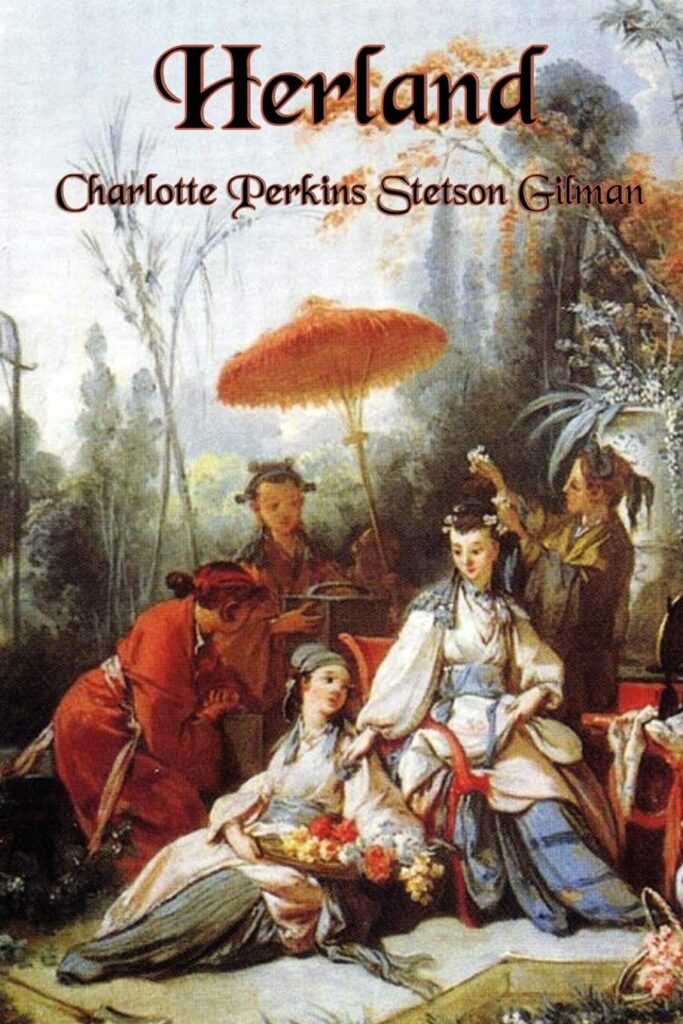
Example:
“Herland” by Charlotte Perkins Gilman is a famous utopian novel that presents a society composed entirely of women. The story explores themes of gender, equality, and societal structure through the eyes of three male explorers who discover this hidden utopia. Gilman’s depiction of a harmonious and advanced society challenges contemporary notions of gender and social organization. The novel’s exploration of an ideal world free from conflict and inequality offers a fascinating look at the possibilities of human progress. “Herland” is a thought-provoking and inspiring read that encourages readers to envision a better future.
7. Steampunk
Steampunk combines science fiction with 19th-century steam-powered technology, often featuring Victorian aesthetics, anachronistic inventions, and fantastical adventures. These stories blend historical settings with futuristic tech, creating a unique and imaginative world. Characters might be inventors, explorers, or adventurers, navigating a world of steam engines and clockwork machinery. Themes of innovation, exploration, and the clash between tradition and progress are common. This subgenre appeals to readers who enjoy the blend of old-fashioned style with futuristic concepts, providing a rich and visually striking narrative experience.
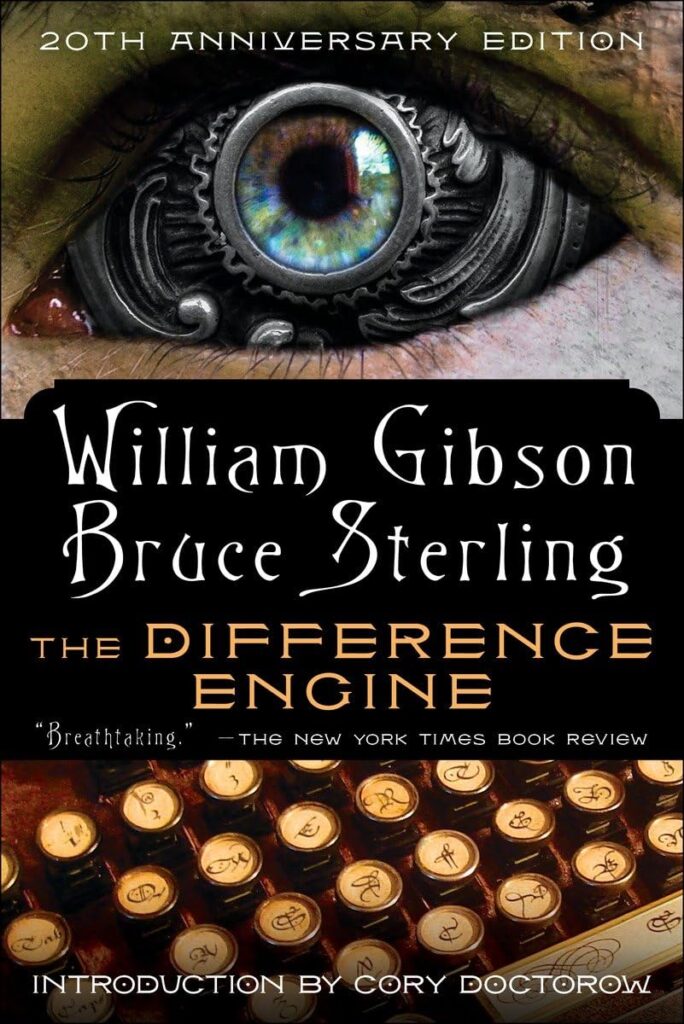
Example:
“The Difference Engine” by William Gibson and Bruce Sterling imagines an alternate history where Charles Babbage’s mechanical computer revolutionizes the 19th century. The novel explores a world transformed by advanced steam-powered technology, blending historical events with speculative inventions. Characters navigate a society where technology and politics intertwine, creating a complex and engaging narrative. Gibson and Sterling’s vivid descriptions and intricate plot make “The Difference Engine” a standout in the steampunk genre. The book offers a unique blend of history and science fiction, providing a captivating and thought-provoking read.
8. Post-Apocalyptic
Post-apocalyptic sci-fi novels explore the aftermath of global catastrophes like nuclear war, pandemics, or climate change. These stories focus on survival, rebuilding society, and the resilience of the human spirit. Characters often face harsh environments and scarce resources, struggling to maintain hope and humanity. Themes of survival, community, and the impact of disaster on society are central. This subgenre appeals to readers who enjoy gritty, survivalist tales and the exploration of human perseverance in the face of overwhelming odds.

Example:
“The Road” by Cormac McCarthy is a poignant post-apocalyptic novel that follows a father and son journeying through a desolate landscape devastated by an unspecified catastrophe. The story is a stark exploration of survival, desperation, and the enduring bond between parent and child. McCarthy’s spare prose and haunting imagery evoke a sense of bleakness and isolation, capturing the harsh realities of a world stripped bare of civilization. As they struggle to find food, shelter, and safety, the characters confront moral dilemmas and the fragility of human decency. “The Road” is a powerful meditation on loss, hope, and the will to survive in the face of unimaginable adversity.
9. Time Travel
Time travel sci-fi involves journeys through time, exploring the consequences of altering history or glimpsing into the future. These stories often delve into paradoxes and the philosophical implications of time travel on human existence. Characters might be scientists, adventurers, or everyday people thrust into extraordinary temporal adventures. Themes of fate, identity, and the nature of reality are common. This subgenre appeals to readers fascinated by the possibilities of temporal manipulation and the exploration of alternative timelines.

Example:
“The Time Machine” by H.G. Wells is a classic time travel tale that follows an unnamed Time Traveller as he journeys to distant futures. The novel explores the evolution of humanity through encounters with two divergent species: the gentle Eloi and the predatory Morlocks. Wells’ narrative serves as a commentary on social class and the future of civilization, blending scientific speculation with social critique. The Time Traveller’s discoveries challenge his understanding of progress and the fate of humanity, raising profound questions about the consequences of technological advancement. “The Time Machine” remains a seminal work in time travel fiction, offering readers a thought-provoking exploration of time, society, and human destiny.
10. Alien Invasion
Alien invasion sci-fi novels depict extraterrestrial beings arriving on Earth, often leading to conflict, cooperation, or profound changes in human society. These stories explore themes of survival, adaptation, and the unknown. Characters confront the challenges of encountering alien intelligence and navigating interspecies relationships. Themes of fear, curiosity, and the resilience of the human spirit are central. This subgenre appeals to readers intrigued by the mysteries of outer space and the potential consequences of alien contact.

Example:
“The War of the Worlds” by H.G. Wells is a seminal alien invasion story that portrays a Martian invasion of Earth. The novel follows an unnamed protagonist as he witnesses the devastating impact of Martian technology on human civilization. Wells’ narrative blends action-packed encounters with philosophical reflections on imperialism and the nature of humanity. “The War of the Worlds” challenges readers to consider humanity’s place in the universe and the fragility of our existence in the face of superior extraterrestrial forces. The novel’s enduring popularity lies in its vivid depiction of alien invasion and its exploration of timeless themes of survival and resilience.
12. Genetic Engineering
Genetic engineering sci-fi novels explore the manipulation of DNA and the ethical, social, and biological implications of altering life. These stories raise questions about identity, evolution, and the nature of humanity itself. Often set in worlds where genetic modification is commonplace, they delve into the potential benefits and dangers of advanced biotechnology. Characters in these stories may be scientists, genetically modified beings, or those fighting against genetic tampering. Themes of control, freedom, and the definition of what it means to be human are frequently explored. Readers who are fascinated by the possibilities and perils of genetic science will find this subgenre compelling and intellectually stimulating.

Example:
“Oryx and Crake” by Margaret Atwood examines a future where genetic engineering has radically changed the world. The protagonist, Snowman, reflects on the events that led to the near extinction of humanity, brought about by the scientific hubris of his friend, Crake. The novel features genetically engineered creatures, known as the Crakers, designed to replace humans. Through Snowman’s memories and the dystopian present, Atwood explores themes of morality, scientific responsibility, and the unforeseen consequences of playing God. The book is an intricate and deeply layered narrative that questions the limits of human knowledge and ethics.
13. Hardboiled Science Fiction
Hardboiled sci-fi novels blend the gritty, cynical elements of noir and detective fiction with futuristic settings. These stories often feature tough, morally ambiguous protagonists navigating dark, corrupt worlds. They emphasize mystery, crime, and the harsh realities of life in technologically advanced societies. The settings can range from cyberpunk cities to dystopian futures where law and order have broken down. Readers are drawn to the complex characters and the intricate plots filled with twists and moral dilemmas. This subgenre appeals to those who enjoy intense, character-driven narratives that challenge conventional notions of right and wrong.

Example:
“Altered Carbon” by Richard K. Morgan follows Takeshi Kovacs, a former soldier turned private investigator, in a future where consciousness can be transferred between bodies. Hired to solve a wealthy man’s apparent suicide, Kovacs navigates a world of political intrigue and technological advancements. The novel explores themes of identity, mortality, and the socio-economic divide exacerbated by such technology. With its fast-paced plot and richly detailed world, “Altered Carbon” offers a gripping read for fans of both science fiction and noir. The story’s dark atmosphere and complex characters keep readers engaged from start to finish.
14. Climate Fiction (Cli-Fi)
Climate fiction focuses on the impacts of climate change and environmental issues on future societies. These stories highlight the challenges humanity faces due to ecological disasters and explore the potential solutions and adaptations. Often set in dystopian or post-apocalyptic worlds, cli-fi delves into themes of survival, resource scarcity, and the human relationship with nature. Characters may be scientists, activists, or ordinary people struggling to cope with environmental changes. This subgenre raises awareness about current environmental issues through compelling narratives and vivid world-building. It is ideal for readers interested in exploring the consequences of climate change and the fight for a sustainable future.
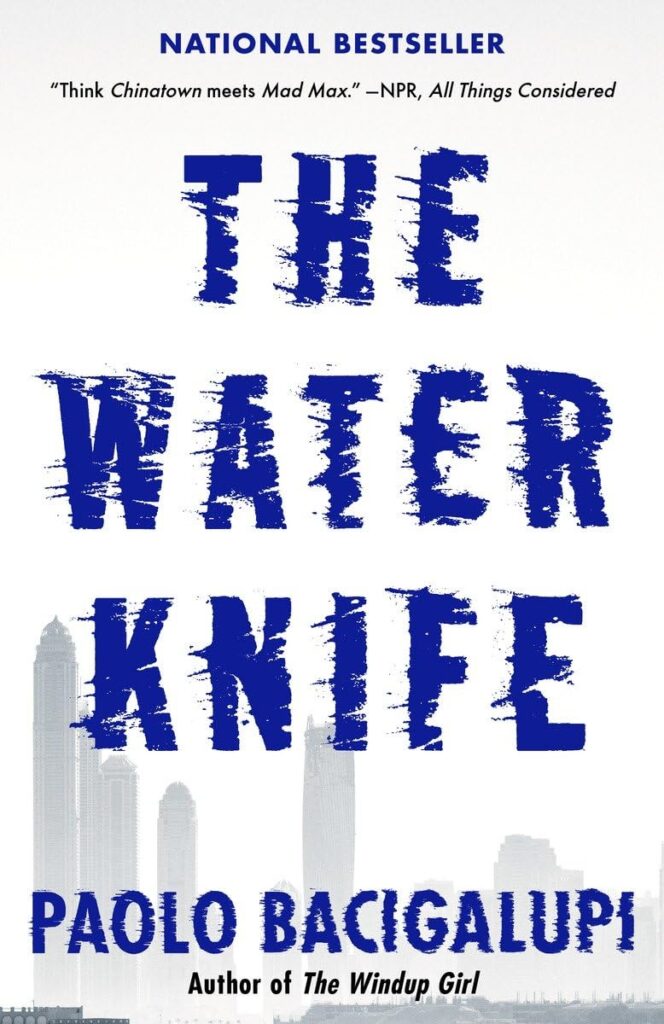
Example:
“The Water Knife” by Paolo Bacigalupi is set in a near-future America ravaged by drought and water scarcity. The story follows Angel Velasquez, a “water knife” who cuts water supplies to cities as a form of control. As Angel navigates the dangerous world of water politics, he encounters a journalist and a refugee, both searching for a better life. The novel explores the desperate measures people take to survive and the corruption that arises in a world where water is more valuable than gold. Through its vivid portrayal of a water-starved future, “The Water Knife” underscores the urgent need to address climate change.
15. Space Western
Space Westerns combine elements of classic Westerns with science fiction, creating a unique genre that often features frontier-like planets and lawless societies. These stories blend the rugged individualism and adventure of the Old West with futuristic settings and technology. Characters might be outlaws, bounty hunters, or settlers, facing challenges in hostile environments. Themes of survival, justice, and freedom are prevalent, with a focus on personal courage and moral ambiguity. Readers who enjoy the pioneering spirit and epic battles of Westerns, mixed with the imaginative scope of sci-fi, will find this subgenre appealing.

Example:
“The Gunslinger” by Stephen King is a prime example of a space western. The novel follows Roland Deschain, the last gunslinger, as he journeys through a desolate and mystical world in pursuit of the enigmatic Man in Black. This world, reminiscent of the Old West, is filled with strange technology, ancient ruins, and supernatural elements. Roland’s quest combines the gritty determination and lone heroism of a Western with the speculative and fantastical elements of sci-fi. As he traverses barren landscapes and encounters various foes, Roland embodies the archetypal gunslinger, making “The Gunslinger” a compelling read for fans of both genres.
16. Biopunk
Biopunk focuses on biotechnology and genetic engineering, exploring the ethical and societal impacts of manipulating biology and life itself. These stories often feature dystopian settings where bioengineering has run amok, leading to a world filled with genetically modified beings and bioterrorism. Characters in biopunk novels might be rogue scientists, biohackers, or ordinary people caught up in biological experiments. Themes of identity, ethics, and the natural versus the artificial are central to this subgenre. Readers who are intrigued by the possibilities and dangers of biotechnology will find biopunk thought-provoking and engaging.

Example:
“The Windup Girl” by Paolo Bacigalupi presents a future where genetic engineering has created new forms of life and altered ecosystems. The story follows several characters in Bangkok, including Emiko, a genetically engineered “windup” girl, struggling for survival and freedom. The novel examines the consequences of bioengineering on society, economy, and the environment. Through its richly detailed world and interconnected narratives, “The Windup Girl” highlights the complexities and moral dilemmas of genetic manipulation. The book is a compelling exploration of humanity’s drive to control and reshape nature.
17. Slipstream
Slipstream blurs the lines between science fiction, fantasy, and literary fiction, often incorporating surreal and avant-garde elements. These stories challenge conventional narrative structures and explore themes of reality, identity, and perception. Characters might experience dreamlike events or navigate worlds that defy logical explanation. Slipstream fiction is known for its experimental style and emotional depth, appealing to readers who enjoy genre-blending and unconventional storytelling. This subgenre is ideal for those looking for a literary experience that pushes the boundaries of traditional sci-fi and fantasy.

Example:
“Slaughterhouse-Five” by Kurt Vonnegut is a quintessential slipstream novel, blending science fiction with surrealism and dark humor. The protagonist, Billy Pilgrim, becomes “unstuck in time” and experiences moments from his life out of order, including his time as a soldier in World War II and his abduction by aliens. The novel addresses themes of fate, free will, and the absurdity of war, presenting a unique narrative structure that challenges readers’ perceptions. Through its mix of historical events and fantastical elements, “Slaughterhouse-Five” offers a profound and unconventional reading experience.
18. Afrofuturism
Afrofuturism combines science fiction, history, and African culture, exploring the future from an African or African diaspora perspective. These stories often incorporate elements of mythology, folklore, and speculative technology, creating rich, imaginative worlds. Themes of identity, cultural heritage, and social justice are prevalent, offering unique perspectives on future possibilities. Characters may be explorers, revolutionaries, or beings with supernatural abilities. Afrofuturism provides a platform for diverse voices and stories, making it an exciting and innovative subgenre for readers interested in exploring different cultural narratives within sci-fi novels.

Example:
“Nnedi Okorafor’s “Binti” introduces readers to a young Himba girl who leaves Earth to attend an intergalactic university, defying tradition and encountering cosmic wonders along the way. Okorafor blends African aesthetics, spirituality, and advanced technology in a coming-of-age story that explores themes of cultural identity, belonging, and the pursuit of knowledge. Through Binti’s journey, the novel challenges colonial narratives and celebrates the ingenuity and courage of marginalized communities in navigating unfamiliar worlds. “Binti” exemplifies Afrofuturism by offering a fresh perspective on space exploration and cultural exchange, making it a compelling read for those interested in diverse and visionary storytelling.
19. New Wave Science Fiction
New Wave sci-fi novels emerged in the 1960s and 1970s, focusing on experimental writing styles and more socially and politically engaged themes. These stories often challenge traditional sci-fi conventions, incorporating literary techniques and exploring complex, often controversial subjects. Themes of sexuality, psychology, and existentialism are common, with an emphasis on character development and narrative innovation. Readers who enjoy creative, thought-provoking stories that push the boundaries of the genre will find New Wave sci-fi particularly appealing. This subgenre is ideal for those looking for a more introspective and avant-garde approach to science fiction.

Example:
“The Dispossessed” by Ursula K. Le Guin is a seminal New Wave sci-fi novel that explores anarchism and utopianism through the story of Shevek, a physicist from the planet Anarres. Shevek travels to the rival planet Urras to share his revolutionary theory of time, hoping to bridge the ideological divide between the two worlds. The novel delves into themes of freedom, societal structure, and the individual’s role within a community. Through its rich world-building and philosophical depth, “The Dispossessed” challenges readers to reconsider their views on society and human nature. Le Guin’s masterful storytelling and innovative narrative make it a standout work in the genre.
20. Solarpunk
Solarpunk envisions optimistic futures where humanity has successfully addressed climate change and ecological sustainability. These stories highlight innovative technologies, green energy solutions, and harmonious living with nature. Characters often work together to create sustainable communities and overcome environmental challenges. Themes of cooperation, resilience, and the power of positive change are central to solarpunk. This subgenre offers a hopeful vision of the future, making it ideal for readers who are inspired by stories of environmental activism and sustainable living.
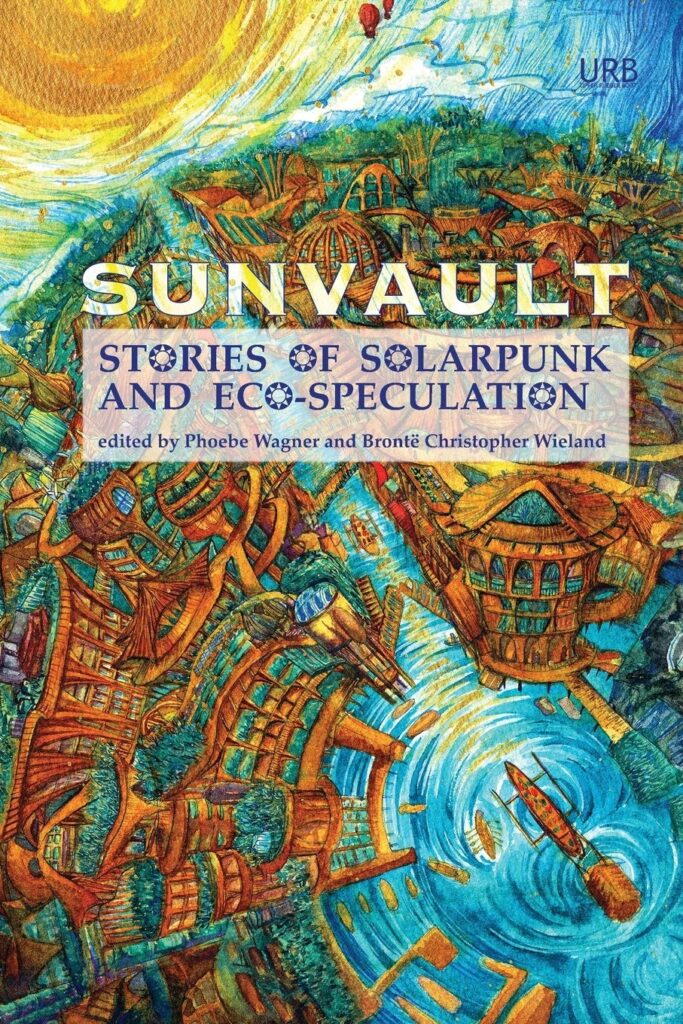
Example:
“Sunvault: Stories of Solarpunk and Eco-Speculation” edited by Phoebe Wagner and Brontë Wieland is an anthology that showcases diverse stories within the solarpunk genre. Each story presents a unique vision of a sustainable future, exploring themes of community, innovation, and environmental stewardship. The anthology features a range of voices and styles, offering a rich tapestry of hopeful and imaginative narratives. Through its collection of short stories, “Sunvault” inspires readers to envision and strive for a better, greener world. The book is a celebration of creativity and ecological consciousness.
21. Dieselpunk
Dieselpunk combines the aesthetics and technology of the interwar period (1920s-1950s) with speculative fiction, creating a gritty, industrial feel. These stories often feature a world where diesel-powered machines and Art Deco design dominate. Characters might be pilots, engineers, or resistance fighters in an alternate history or dystopian future. Themes of war, technological advancement, and societal change are common. Readers who enjoy the blend of historical settings with futuristic tech and a sense of adventure will find dieselpunk fascinating.

Example:
“Leviathan” by Scott Westerfeld is set in an alternate World War I, blending steampunk and dieselpunk elements. The story follows Alek, the son of the assassinated Archduke Ferdinand, and Deryn, a girl disguised as a boy to serve in the British Air Service. Together, they navigate a world divided between Clankers, who use mechanized war machines, and Darwinists, who use genetically engineered creatures. The novel combines historical events with imaginative technology, creating an exciting and unique narrative. Through its rich world-building and dynamic characters, “Leviathan” offers a compelling and adventurous read.
22. Superhero Science Fiction
Superhero sci-fi novels revolve around characters with extraordinary abilities, often exploring themes of power, responsibility, and the impact of superhuman beings on society. These stories blend the action and drama of superhero tales with speculative elements. Characters might grapple with their identities, moral choices, and the consequences of their powers. Themes of justice, heroism, and the human condition are central. Readers who enjoy dynamic, character-driven stories with a sci-fi twist will find this subgenre engaging.

Example:
“Vicious” by V.E. Schwab follows two college students, Victor and Eli, who discover how to develop superpowers through near-death experiences. Their experiment leads to a bitter rivalry as they turn into archenemies, each with their own view of what it means to be a hero or a villain. The novel explores themes of ambition, betrayal, and the blurry lines between good and evil. With its fast-paced plot and complex characters, “Vicious” offers a fresh take on the superhero genre. Schwab’s storytelling captivates readers, making them question the true nature of heroism.
23. Tech Noir
Tech noir blends elements of film noir with science fiction, featuring a dark, gritty atmosphere and complex, morally ambiguous characters. These stories often involve crime, corruption, and futuristic technology. The settings can range from dystopian cities to cybernetic societies. Themes of identity, ethics, and the human condition are explored through a noir lens. Readers who enjoy dark, intense narratives with a sci-fi twist will find tech noir captivating.
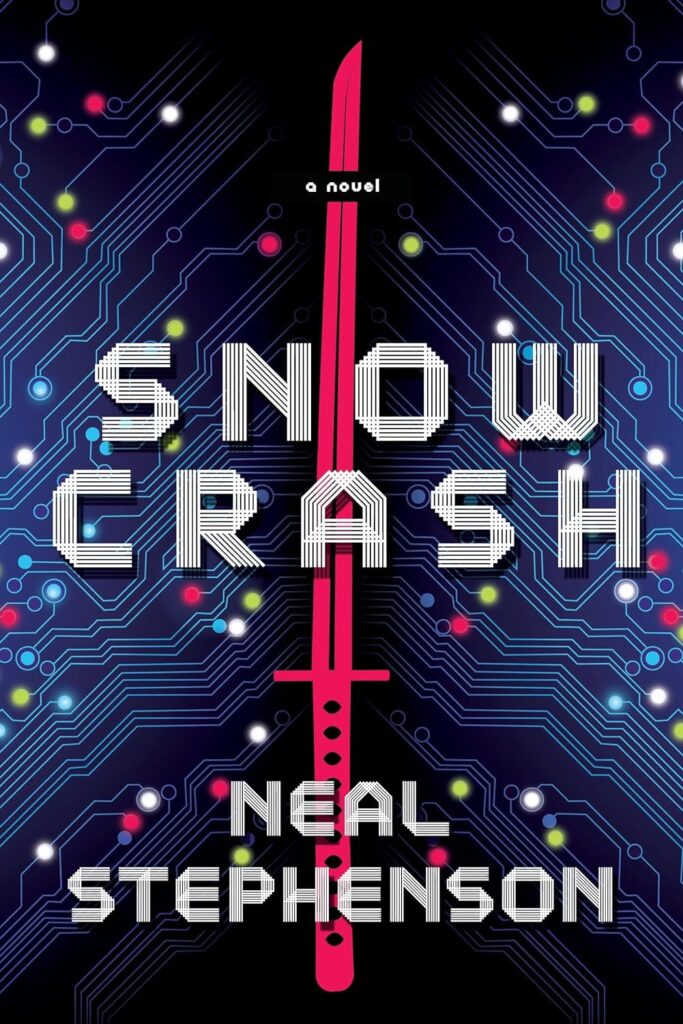
Example:
“Snow Crash” by Neal Stephenson combines cyberpunk with noir elements in a future America where the virtual and real worlds collide. The protagonist, Hiro Protagonist, is a hacker and pizza delivery driver who uncovers a deadly virtual drug called Snow Crash. As Hiro investigates, he navigates a world filled with corporate control, cyber warfare, and virtual reality. The novel explores themes of technology, power, and the nature of reality. With its fast-paced plot and richly detailed world, “Snow Crash” offers an engaging and thought-provoking read.
24. Transhumanism
Transhumanist sci-fi novels explore the implications of enhancing human capabilities through technology, including cybernetic enhancements, genetic engineering, and artificial intelligence. These stories delve into the potential and dangers of surpassing human limitations. Characters might be enhanced humans, scientists, or those opposing such advancements. Themes of identity, ethics, and the future of humanity are central. Readers interested in the intersection of technology and human evolution will find transhumanism intriguing.
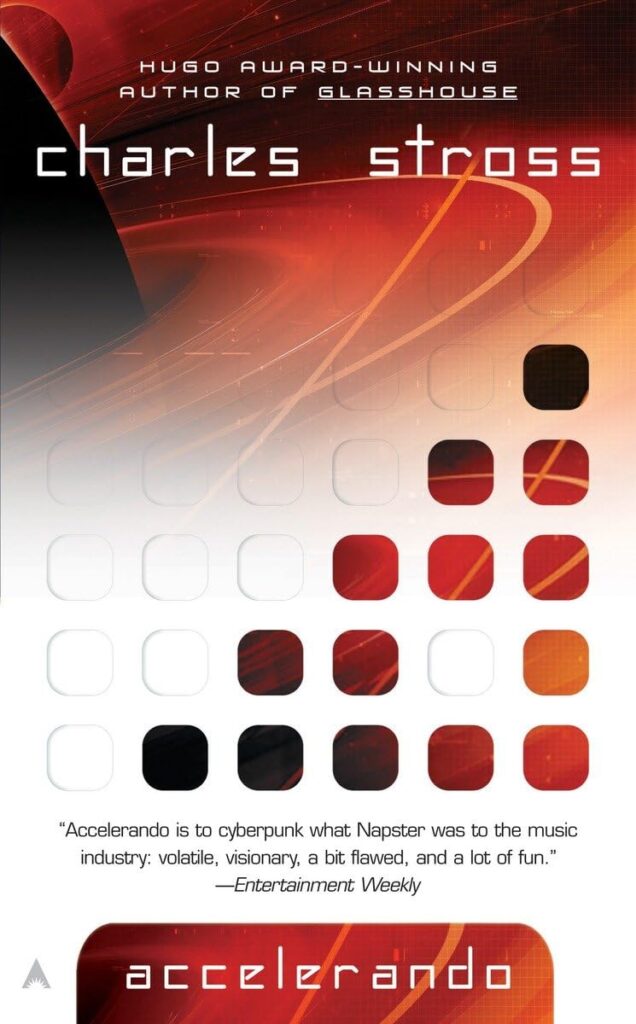
Example:
“Accelerando” by Charles Stross explores the future of human evolution and technology through the generations of the Macx family. The story begins with Manfred Macx, a venture altruist who uses advanced technology to predict and influence future trends. As the narrative progresses, it delves into the lives of his descendants, each dealing with increasingly complex and advanced technological landscapes. The novel examines themes of consciousness, identity, and the societal impacts of rapid technological change. Stross’s intricate world-building and visionary storytelling offer a fascinating glimpse into the future of humanity.
25. Robot Science Fiction
Robot sci-fi novels focus on the role of robots and artificial intelligence in society, exploring themes of consciousness, autonomy, and the ethics of AI. These stories often feature advanced robots interacting with humans, raising questions about their place in the world. Characters might be AI researchers, robots, or those impacted by AI technology. Themes of trust, control, and the nature of intelligence are central. Readers fascinated by robotics and AI will find this subgenre compelling.

Example:
“I, Robot” by Isaac Asimov is a collection of stories that examines the interactions between humans and robots, introducing Asimov’s famous Three Laws of Robotics. Each story explores different scenarios involving robots, from their use in domestic settings to their roles in space exploration. The collection delves into themes of ethics, consciousness, and the complexities of creating intelligent machines. Through its thought-provoking narratives, “I, Robot” challenges readers to consider the implications of advanced robotics. Asimov’s work remains a cornerstone in the exploration of AI and its impact on society.
The Many Worlds of Sci-Fi Novels
From sci-fi novels that explore scientific ideas to dystopian stories that make us think about how societies work, there’s a sci-fi genre for everyone. These different kinds of stories let us imagine far-off worlds and think about where technology, society, and humanity might be headed. So, find a subgenre that interests you, pick up one of these amazing books, and let your imagination blast off into a new exciting world. Happy reading!

